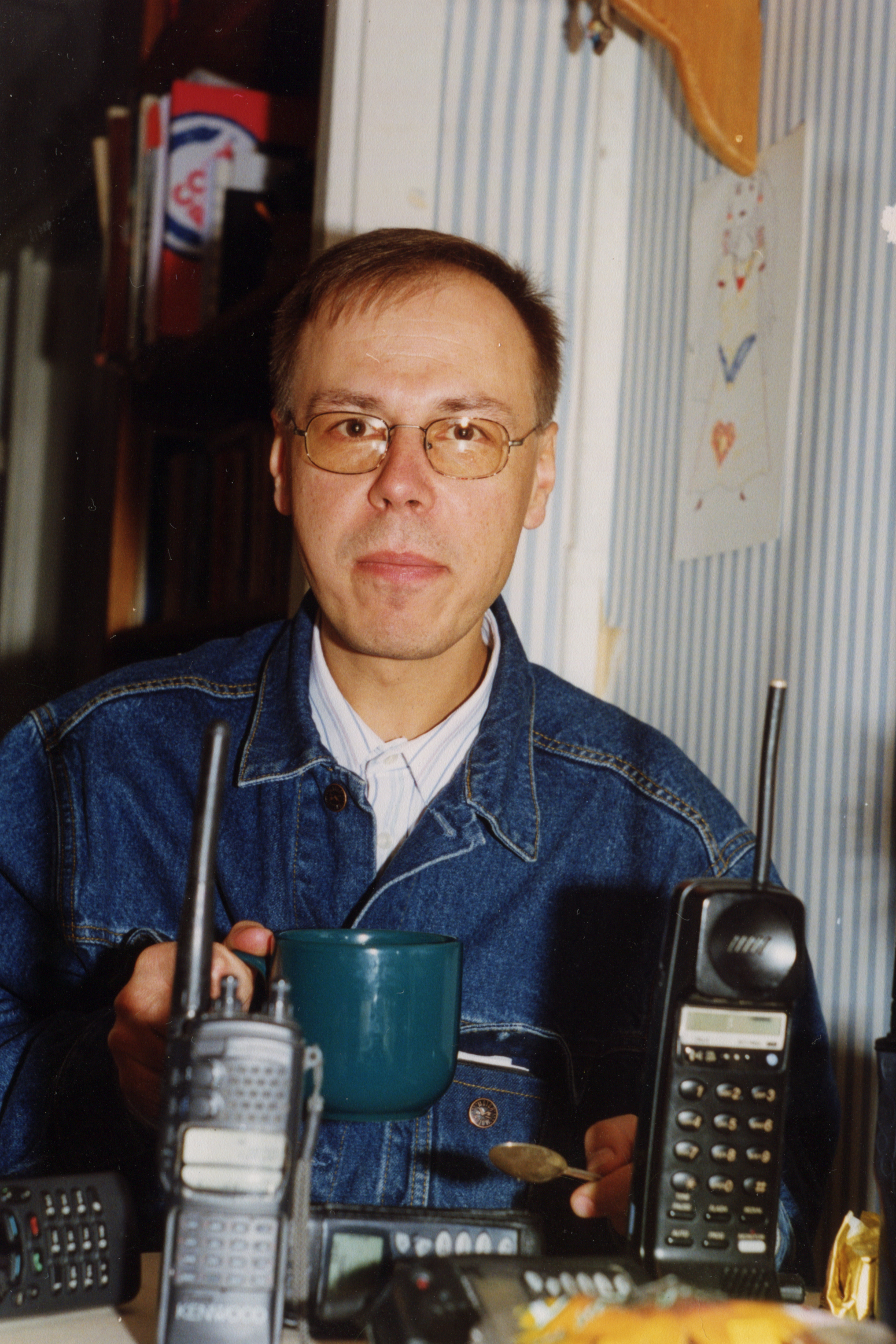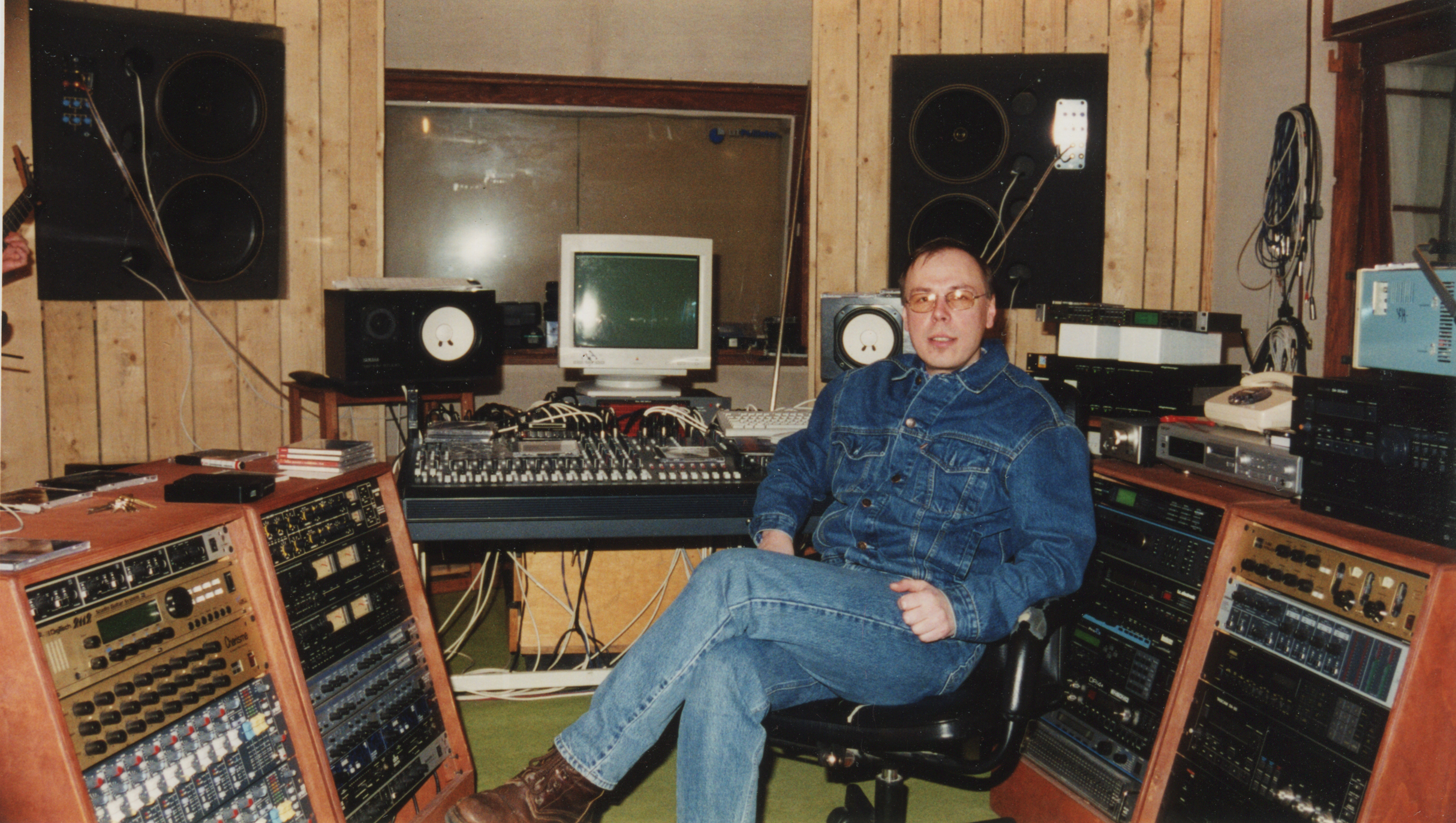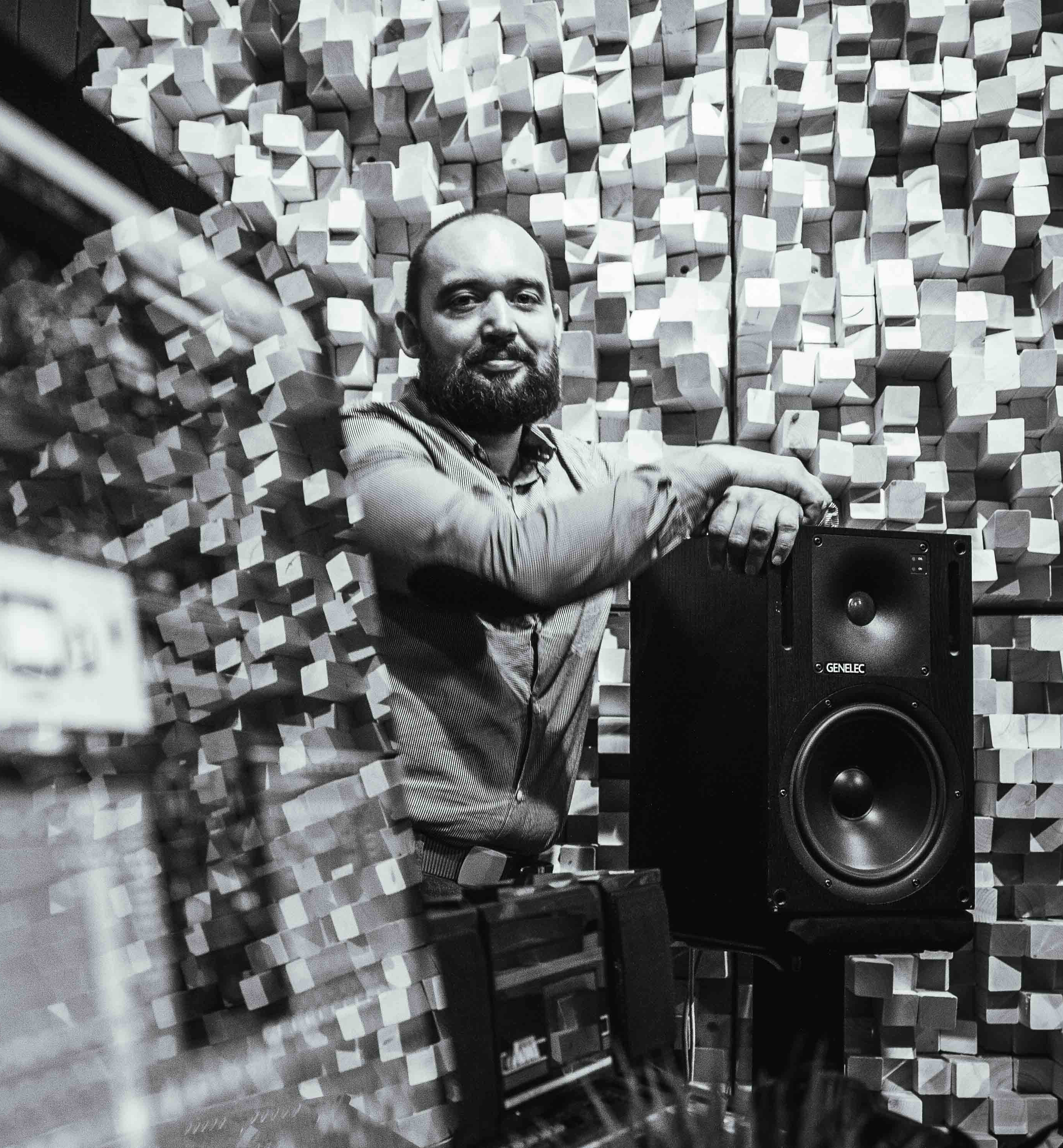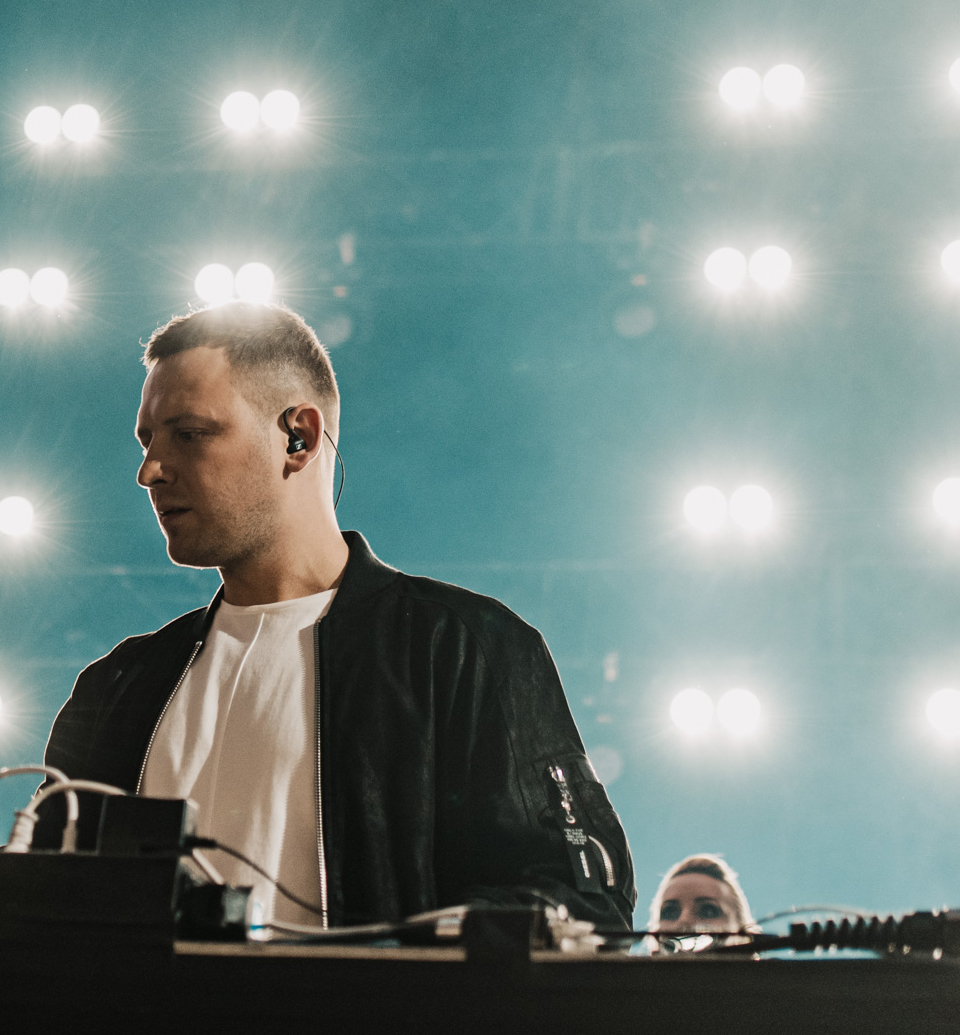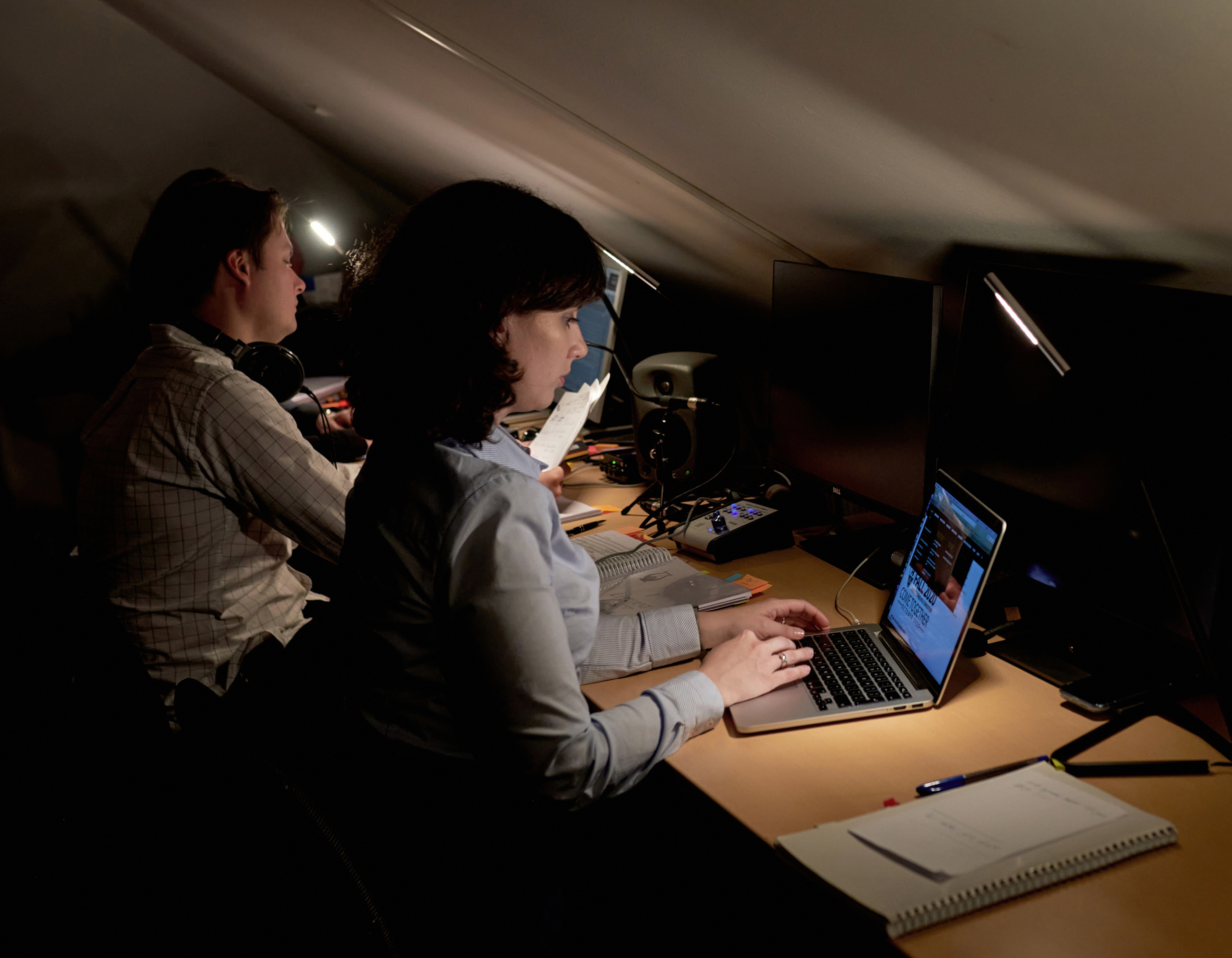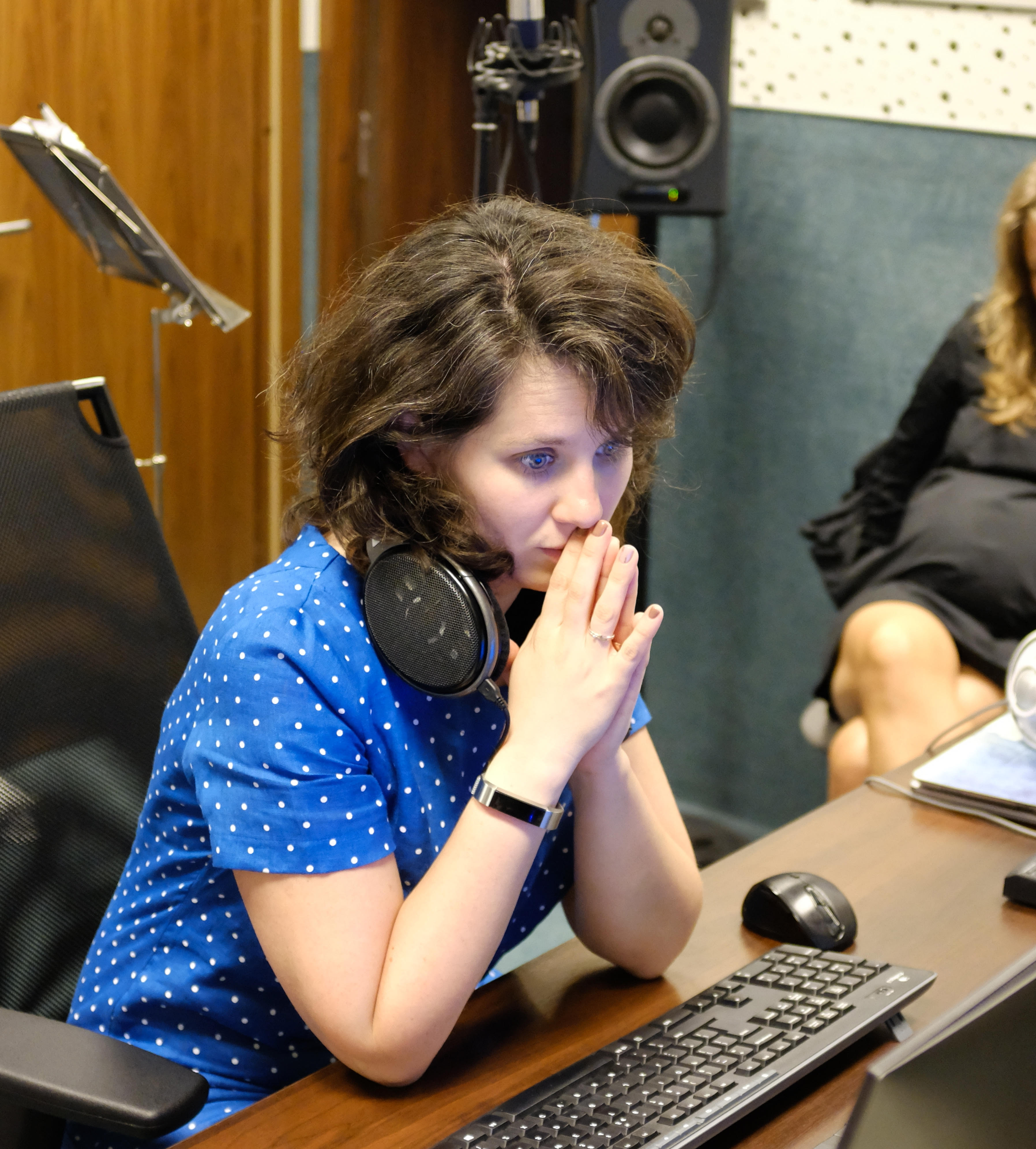Laura KEŠYTĖ | The Challenges of Being an Audio Engineer in Lithuania: From the Early ‘80s to Today
Some 40 years ago in a Western galaxy far, far away, there was the worldwide superstardom of Michael Jackson and Prince and the US national emergence of Madonna and Whitney Houston, who were among the most successful musicians during this time. The nostalgic ‘80s, bouncing with electro dance music and new wave, came just after disco but before the Internet and the World Wide Web, a decade after Jimmy and Janis were gone but before the boom of teen pop, gangsta rap, and the collapse of the Soviet Union...
Soon enough all the Baltic countries were striving for their freedom, yet our revolution was not televised. It was spread aurally—through music and songs. But first things first! You cannot have Beyoncé without a professional recording studio or a Finneas O’Connell on your side. But back in the analogue recording era, even George Martin had to have some decent equipment and a good tracking room, please! And behind the Iron Curtain, well, we just had to craft things with our own hands, having nothing but a great deal of enthusiasm.
In this article I aim to discover how the record industry was formed around those who make a living through the creation, recording, and distribution of songs and albums in Lithuania. I chose to interview three generations of sound engineers. Together we discuss and expose the different starting points of their careers in terms of challenges and technologies, as well as the sociopolitical and economic context of that particular time.
GIEDRIUS LITVINAS: HOW TO MAKE SOMETHING OUT OF NOTHING
“One of my dear fellows who worked for State Youth Theatre said he had this discontinued studio tape recorder MEZ (Moskovskij eksperimentalnyj zavod). It was produced in a military aviation factory that specialised in prosumer gear, yet this one was professional, old-time, monophonic, huge, and heavy, made sometime in the ‘70s. I added two Hungarian stereo heads modified from mono to stereo, and another comrade handcrafted the drawers for the recording amplifiers.
It was just perfect! Lasted for a very long time, even if it had some mechanical flaws—for example, it was adjusted for 760 meters of tape, and the tapes that we bought were one kilometre long, but, hey, it was a start! And we managed to make a lot of recordings with it”, recalls sound engineer Giedrius Litvinas. Many of his colleagues and apprentices consider him the founder of modern sound recording and engineering culture in Lithuania.
The story Giedrius Litvinas tells takes place at the beginning of the ‘80s. Only a few recording studios existed at that time, and they were owned by the state. Together with two trusted associates—Gediminas Zujus and Kęstutis Lušas—they started building their private studio.
“A friend of mine was keen on digital equipment, so I asked him to craft a reverberator since it was quite impossible to buy one. And so, he did it (in 1983!) according to a German model depicted in some technical journal. And—oh, this is important to mention, too—the other fellow crafted a sound console too, on his own, piece by piece”, adds Litvinas.
They yearned to have a professional studio with live rooms, a grand piano, and the ability to record big bands, but times were harsh, especially financially. “I can talk money if you like. During that time we made 2 US dollars an hour for studio work. Imagine how difficult it was to buy something that cost hundreds and thousands of dollars. But we did our best and bought as much as we could”, says Litvinas.
To make ends meet, compromises had to be made. “I call it manoeuvring between music as art and music as pornography. One uplifts your soul and the other feeds you and your family”, says Litvinas metaphorically, but frankly enough.
The most precious thing they were eager to acquire was a modern, analogue, multichannel tape recorder. Until the beginning of the ‘90s, they had been making records using classic sound-on-sound technology, invented by Les Paul in the late ‘50s.
While the development of this technology had been a critical step in the history of music production, sound-on-sound recording was a cumbersome and destructive method of overdubbing, as each bounce degraded the quality of the successive dub. “If the bass player, for example, made a mistake, we could not change it. Everyone had to be very precise, and if not, quality was lost”, recounts Litvinas.
Even when the multichannel tape recorder became the new standard, the devices were very expensive, and not every professional studio was able to purchase them. “New York, London, Berlin, Tokyo had it, but here in the small Lithuanian market, it was worth the price of an apartment. And then again, a good friend of ours managed to buy one. It was a Tascam MSR24S 24-track 1-inch tape multichannel recorder, and it cost around 12,000 US dollars.[1] Obtaining it dramatically changed our ability to record and produce music in our studio. Afterward, in 1994, we went fully digital using an innovation of the time: the Tascam DA-88”, says Litvinas.
“During Perestroika[2], when Lithuanian pop music entered the industry, one of the first music producers (Aleksandras Romanovas) produced around 200 to 300 thousand cassette tapes for this band Broliai Aliukai. What did this mean for a country that had only 3.7 million residents? Well, it was a heck of a number of record sales, even compared to Michael Jackson”, laughs Litvinas.
But the winds kept changing. Pro Tools debuted in 1991, priced around 6,000 US dollars, and digital audio workstations (DAWs) were about to become the centrepiece of most studios. CDs would dominate the ‘90s, and layer III compression with the .mp3 file extension also entered.
“One of the first records made with 4-channel Pro Tools was Dis Is da Drum by Herbie Hancock in 1994. Digital equipment was still taking its first steps at that time. But soon enough it started to become more and more affordable not only for grand studios like Warner Bros. or Sony but for a much wider audience, independent studios, and artists. It was a game-changer indeed, and as a result, many studios emerged and even more were shut down. But that's a whole other story...” sums up Litvinas.
NORMANTAS ULEVIČIUS: IN-BETWEEN ANALOGUE AND DIGITAL TIMES
Programming computers to play music began as early as 1951 when Australia’s first digital computer, CSIRAC, allegedly played “Colonel Bogey”. At the time, they were large and heavy, room-sised, and nothing compared to today’s slim and light laptops that can easily fit in a backpack.
It took almost half a century to ignite the fast growth of the personal computer (PC) market. When PCs became powerful enough to run DAWs, the art of music production was revolutionised. DAWs gave many more producers, songwriters, and artists the power to manipulate and optimise music.
Yet in late ‘90s Lithuania, PCs were still a great luxury, and DAWs, well, you needed to commit a crime to get one. “Even if you managed to afford a PC it was almost impossible to buy software legally. There were neither suppliers nor sellers, and those of us who wanted to work with digital audio got our first DAWs from hackers. CDs with thousands of hacked programmes were sold in bazaars. For a while it all seemed like a common thing”, remembers Normantas Ulevičius, who has been working in the music business since 2001 as a music producer, arranger, and mixing and mastering engineer.
High-quality sound cards were also big-ticket items, and non-professional but cheaper ones were lousy. “You could hear how the hard disk worked or the output wires bustled while listening through them”, he adds. “Nonetheless, it was a choice for those who had a limited budget and still wanted to be in business”.
Another less costly option was the Alesis ADAT 8-track digital tape recorder. This relatively inexpensive machine provided a cost-effective way for a producer or musician of moderate means to produce multitrack masters. “In my opinion, the Alesis ADAT lacked quality, especially its analogue-to-digital converters, and you couldn’t edit or cut tracks with it. However, it became a well-accepted choice that let engineers avoid working with low-quality sound cards just before PCs went mainstream, and final masters were usually made using the DAT [digital audio tape] format”, says Ulevičius.
Until now, we have talked mostly about gear. It is time to shift our discussion towards content.
What was the music like back when you started mixing? I asked Ulevičius. He answered, “Since we had been living behind the Iron Curtain for so many decades, Western music was just like a miracle for us. Therefore, we stole or copied—whatever word you choose to describe it—just as much as we could. Also, it was the only way to learn. I also listened to foreign recordings and tried to make my recordings sound the same–both technically and musically”.
And how are things today? “Looking back at the ‘80s and ‘90s when the technological gap between Western music and local music was evident, I say that nowadays, the gap is very small, if it exists at all. When I started working in a studio, records were made only by serious dudes with solid equipment, who were highly educated in that field. Now with digital audio, everyone can do it. Still, maybe there are just a few who do it truly well, like super professionally. But there are plenty of those who know how to make a record sound just good enough to reach millions of listeners on YouTube”, says Ulevičius.
But fair is foul, and foul is fair. Some people say that the DAW has had a negative influence on music production, commonly lambasting Auto-Tune and its progeny, along with the capacity to align, replace, fix, and refine most aspects of recording. Others blame the DAW’s power to manipulate sound for declining standards of musicianship, bad music on the radio, excessive mediation by producers, and so forth.
“Before Auto-Tune, when studios used to work with DAT recorders, artists needed to be very precise and to have natural skills because there were limited possibilities to edit the track. Therefore, earlier generations of musicians had to both be really skilful performers and have a good feel—and now having a good feel is enough”, says Ulevičius. “There are two sides of the coin. On one hand, today you are free to experiment with your character and creativity. On the other hand, being a skilful performer may not always get you far; you also need to find your voice, unique sound, distinguishable identity. Either way, you need to invest many hours of hard work. And even then, the final element of your success is luck”.
ROLANDAS VENCKYS: MIXING IN A SMALL STUDIO
Some could say that since Edison’s invention of the phonograph, music production has undergone an interesting cycle, and after a hundred years or so, it has come back to its roots. It began as a one-person process of identifying artists and music, then optimising the performance, the balance, and the acoustic and mechanical technology of the phonograph during the recording session.
Today these mechanical tasks that once demanded great focus and expertise have morphed into a complex digital process that is easy to execute with help from today’s machines. Initially performed by one person—including mixing, mastering, manufacturing, and more—the entire production process gradually splintered into myriad parts requiring expertise. Nonetheless, an increasing number of productions are again being managed by one person.
“I guess it could be a very enriching experience to do an internship in a big music recording studio; however, I am not sure if I wish to end up working for one of those. I prefer being independent and working alone”, stresses music producer and mixing engineer Rolandas Venckys. For the past 11 years he had been the producer and mixing engineer of the very famous Lithuanian hip-hop duo Lilas ir Innomine, and since 2020 he has mixed for various mainstream artists. All this time he has been working in his one-man studio.
“I never dreamed of becoming a mixing engineer. Everything I did and learned was dedicated to my music career. But a strange and unexpected thing happened. Two years ago some of my friends asked me if I could mix their song. Sure, I said, as I am always glad to help my friends out. So, I did a first mix for Evgenya Redko, and after that release, many more people kept writing me, asking if I would be their mixing engineer, although I hadn’t advertised myself as one. Since then I’ve been getting requests through word-of-mouth recommendations, and I can’t complain”.
When asked, Venckys describes himself as a “digital guy”, although he anticipates the idea of incorporating some analogue devices into his everyday gear. “As a mixing engineer, I am familiar with finding solutions with the various plug-ins that I use and getting the most from the tracks that I get from artists and their producers. Now I am looking forward to updating my gear and expanding the studio”.
It is worth mentioning that many local sound engineers who provide mixing services also offer mastering. But Venckys is not one of them. “Mastering is not something I am interested in. I consider myself only a mixing engineer because I love analysing records from the artistic point of view, for example, finding out how this or that synthesizer’s sound was designed and things like that”, he explains.
Is there a difference between mixing your music and doing it for other clients? “Honestly? I don’t think I will ever get to make my records’ mixes sound as good as I can make for others”, he laughs. “I guess it’s because during the creation process you spend a lot of time searching for the perfect sound, and what mixing always requires is to cut something out. When you work with somebody else’s music, it is much easier to use, for example, the EQ drastically, if needed”.
Is it expensive to start working as a mixing engineer nowadays? Is it as expensive now as it was for Giedrius Litvinas? “No, we live in slightly different times. Everyone who has a computer, external sound card, headphones, or, better yet, studio monitors, works in a studio. Well, maybe not a studio, but a place where you can produce and mix music in a professional way and achieve wonderful results. It may cost you, all in all, 1,000 euro. The only and most essential thing that can’t be bought is experience”, answers Venckys.
Compared to the Western music market, where do we stand today? “In my opinion, we still are a low labour cost country, although prices are much higher than some decades ago”, says Venckys. Here in Lithuania in 2021, the average mixing and mastering rates per song are around 200 euro for a mix and 100 for mastering. “And as for the quality, I do think that we’re on par [with the West]. But the question is whether we should make this comparison at all. You know, the fate of the one who chases is to be on a wild-goose chase forever”.
ALEKSANDRA + VILIUS KERAS: HOW TO BE MOBILE AND GLOBAL
One can live in a luxury villa in the heart of a prestigious district in L.A., a hipsterish and stylish loft apartment somewhere in Manhattan, or... one can simply park one’s camper in the Champs-Élysées. The same could be said about owning (or working for) a recording studio.
Some engineers get a chance to settle down in places like Abbey Road, Capitol, Metropolis, etc. But today the vast majority of ‘sound guys’ (or girls!) establish their digital studios in their homes (if not in some weird industrial places).
Then, there are those who choose to keep their studio in their pocket as they travel all over the world. These two sound engineers (and a couple!)—Aleksandra and Vilius Kerai—belong to that particular category. For the past ten years they have been developing their brand, Baltic Mobile Recordings.
“It’s all in our company’s title. Recording acoustic music requires certain (or given) acoustic conditions, and we cannot put a whole orchestra in one room. Having a local studio is not an option for us, but with the right equipment we can transform concert halls into recording studios”, says Vilius.
Critically acclaimed and nominated for a Grammy three times, Vilius and Aleksandra have already achieved fame in the field of classical music. From prodigies to legends, from chamber to orchestral music, world-renowned musicians and ensembles like Gewandhausorchester, Kremerata Baltica, City of Birmingham Symphony Orchestra, Gidon Kremer, Mirga Gražinytė-Tyla, Lucas Debargue, Daniil Trifonov, Lawrence Brownlee, Dmitri Hvorostovsky, Ildar Abdrazakov, and Yuliana Avdeeva have been recorded by the Kerais.
But even a camper needs its very own parking space, or, in this case, a decent mixing room. Or maybe not? “Of course, a non-professional home studio is unsuitable for our work. The mixing room has to have enough capacity and a good frequency response, and the equipment used must be calibrated. But the requirements are rather standard, and in Vilnius we have a few rooms that allow us to hear properly so as not to make any mistakes”, says Vilius.
Also, back home they are always welcomed by the Lithuanian National Philharmonic Society. In fact, Vilius and Aleksandra are the founders of a joint project—digital concert hall —which they are both very proud of.
But now let’s talk business. What costs the most? Is it the gear or something else? “Actually, it is not easy to tell. We use the same equipment as every other professional recording studio. Maybe the biggest investments we’ve made so far are non-material. It’s knowledge, because we constantly invest in it a lot”, says Aleksandra. She earned her master’s degree at The Royal Danish Academy of Music, and Vilius pursued his studies at Fachhochschule Darmstadt, in addition to various internships they’ve done (as well as orchestra recording sessions in Giedrius Litvinas’ studio!) in later years.
Up to this point, what would they single out as their greatest achievement or award so far? “Again, it is difficult to distinguish one. We tend not to put an emphasis on awards. Our aim is to look forward and to hold the leading position in the Baltic recording industry. We have released more than 150 albums, which is a lot”, says Vilius.
“When we entered the business, one of our main goals was to improve the standards of classical music recording in Lithuania and to be known internationally. I personally feel proud that sound engineering has become a prestigious profession during this last decade. It is important to teach our young generations that a ‘sound guy’ is not only the one who ‘connects the wires’, though this stereotype is still present”, laughs Aleksandra.
Last but not least, in the world of sound engineering, how does one break into the global market? “One thing’s for sure, you must never stop learning, improving your skills, and listening to music. Also, it is important that musicians, orchestras, and the management that organises the recording process have confidence in you. With trust and good vibes, new creative heights can be reached”, says Aleksandra.
[1] Many albums and famous hits were recorded with this new device, e.g., Kastytis Kerbedis’ Pienių vynas; some Oktava records; and songs by Romas Bubnelis, Studija, Arina, Rebelheart, Marina Granovskaja, and many more.
[2] A system of economic reforms, or restructuring (‘perestroika’ in Russian), initiated in the Soviet Union in 1987 by the newly appointed leader Mikhail Gorbachev (b. 1931) and his economic advisers, that aimed at relaxing strict centralized planning of production and distribution and allowed private ownership of enterprises. "perestroika." Oxford Reference. https://www.oxfordreference.com/view/10.1093/oi/authority.20110803100316963 (accessed 13 August 2021)
